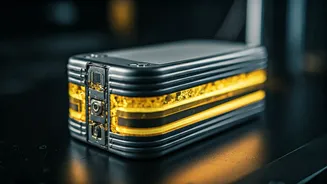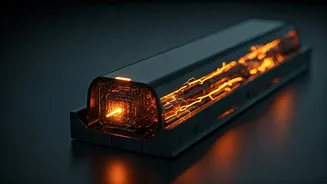Battery Chemistry Advances
The constant demand for more efficient and sustainable energy solutions has spurred intense research into next-generation battery technologies. Amongst
the frontrunners, lithium-sulphur (Li-S) batteries hold substantial promise, primarily due to the high theoretical energy density and the abundance of sulphur, making them a more cost-effective and environmentally friendly option compared to existing lithium-ion batteries. However, Li-S batteries face significant challenges. One of the main issues is the formation of polysulfides. These polysulfides dissolve into the electrolyte, causing the active material to be lost, and further reduce the battery's lifespan. Research has thus been dedicated to mitigate these issues and improve overall performance.
A Two-Level Strategy
In order to address the challenges, scientists have developed a two-level strategy. This strategy aims to improve the performance of lithium-sulphur batteries. It involves modifications at two critical stages. The first level deals with the use of a modified separator. This separator is crucial, as it physically separates the electrodes and prevents direct contact, which could lead to short circuits. The second level concentrates on designing the cathode with innovative materials. The cathode is where the sulphur is housed, and its structure significantly influences the battery's energy output. This dual approach is designed to tackle the fundamental issues that are hindering the widespread adoption of lithium-sulphur batteries, enhancing their stability and efficiency.
Separator Advancements Explained
The separator plays a pivotal role in the two-level strategy. Scientists have created a new separator. This separator actively traps the polysulfides that form during the battery's charge and discharge cycles, which stops them from dissolving into the electrolyte. This improved containment boosts the battery's lifespan. By focusing on improving the separator, researchers aim to overcome one of the biggest challenges in Li-S battery development. This approach not only extends the battery's life but also enhances its overall performance. The separator's design is crucial for ensuring the battery can function efficiently over numerous cycles. The new separator uses advanced materials designed for the effective absorption of polysulfides.
Cathode Material Innovations
The development of a better cathode is the second element of the two-level strategy. The cathode, which contains the sulphur, is crucial for improving the battery's energy output and stability. Scientists are using advanced materials to enhance the cathode's performance. The new cathode design is focused on improving how the sulphur interacts. This interaction directly impacts the battery's ability to store and release energy efficiently. These innovations are critical for boosting the overall effectiveness and longevity of lithium-sulphur batteries. These improvements will make the batteries more efficient and reliable. The innovative materials are designed to increase the battery's power output and extend its operating life significantly.
Future Energy Implications
The improvements in lithium-sulphur batteries have considerable implications for the future of energy. The increased energy density means they can potentially store more energy for the same size and weight, which is essential for electric vehicles and portable devices. Furthermore, the use of sulphur, which is abundant and cheaper than many other battery materials, could reduce production costs and environmental impact. The research also helps to facilitate advancements in related technologies, strengthening the overall energy infrastructure. Ultimately, these innovations promise to revolutionize how we store and utilize energy, pushing the industry towards more sustainable and efficient solutions.















